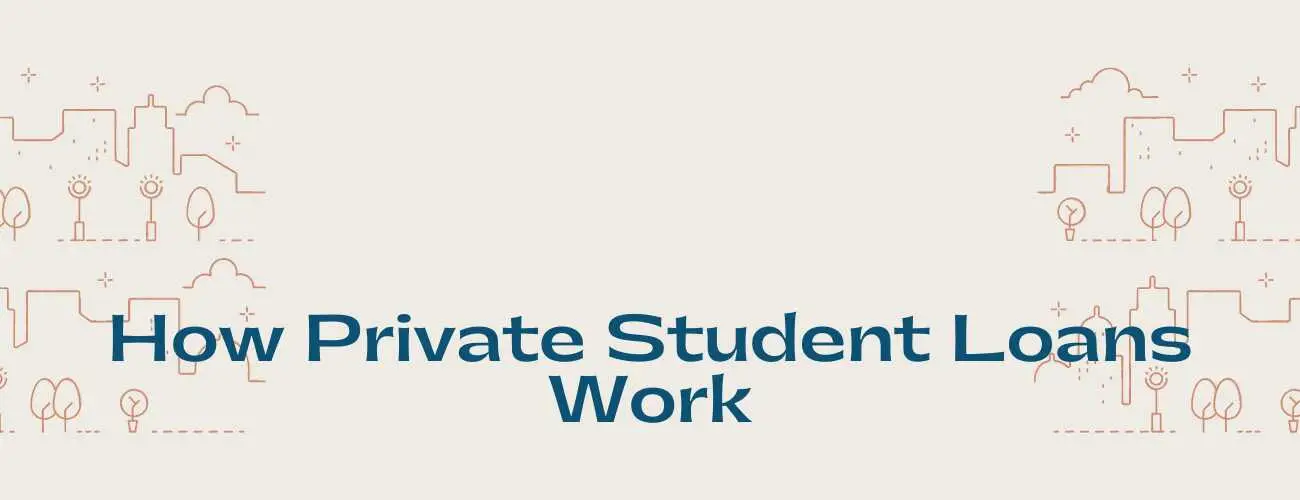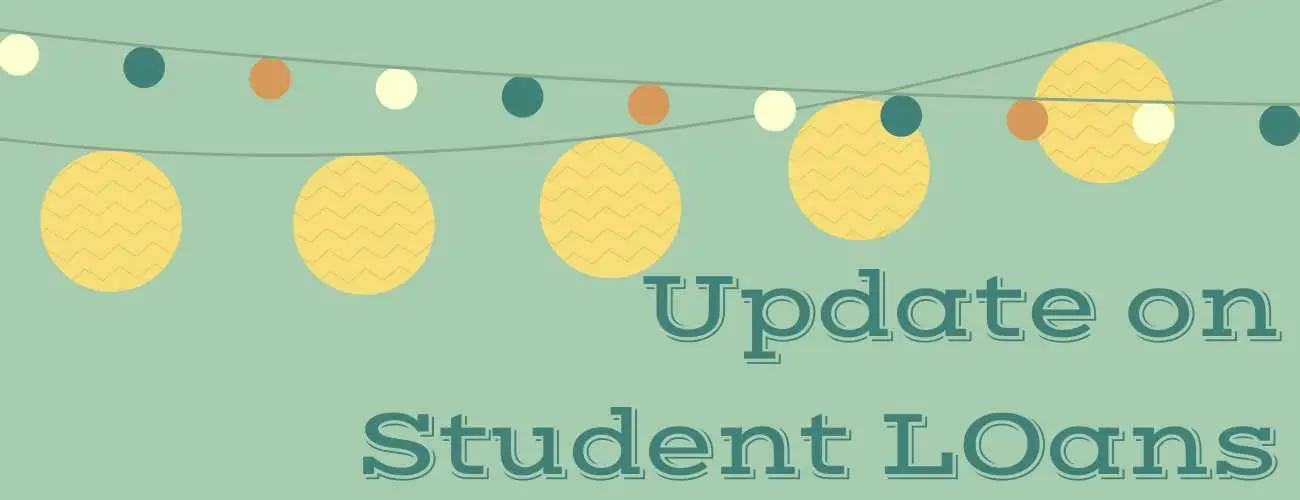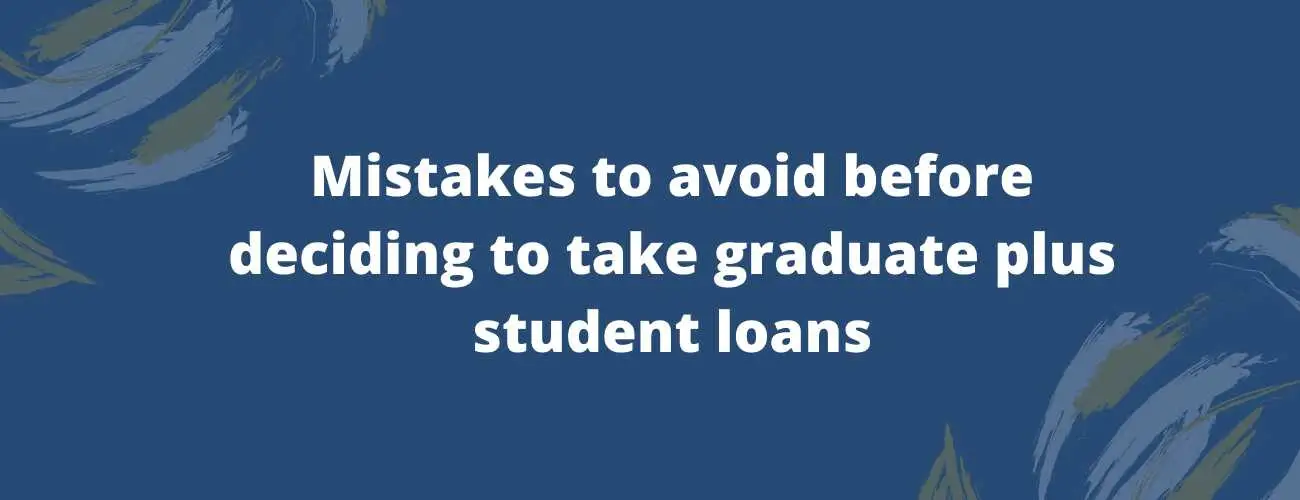The Student Loan Fairness Act H.R. 1330 : All You Need To Know
Learn all about the Student Loan Fairness Act H.R. 1330. Read the objectives of the Act, the Highlights and the Advantages it provides to the borrowers.
Updated by Nchumbeni Yanth on 24th February 2020
In the process of individual loans, debt, and repayment, there are a lot of variations among their pros and cons, which can cause distress and confusion among the borrowers at the time of choosing.
The Student Loan Fairness Act 1330 is designed to help a student understand their purchasing power, strengthen their economic recovery, demand fairness in financing higher education for a student in the U.S via student loan forgiveness, provide caps on interest rates of federal student loans, provide refinancing opportunities for private borrowers, etc.
Senator Elizabeth Warren put forth a bill titled “Student Loan Fairness Act H.R 1330”.
It focuses on helping student loan borrowers in managing their debt by means of being fair for those who have earned it. It was introduced on March 21st, 2013, and has been representing 51 cosponsors since. There are a few important advantages in the bill which might signify a big change in borrowers' lives.
Table of Contents
- What is the Student Loan Fairness Act H.R 1330
- Objectives
- Highlights under the Student Loan Fairness Act
- Advantages of the Student Loan Fairness Act
- Conclusion
What is “The Student Loan Fairness Act H.R. 1330?
It is a bill, cited as “The Student Loan Fairness Act”, enacted by the Senate and House of Representatives of the United States of America in Congress assembly.
It is supposed to grow the purchasing power of the borrower, boost their economic recovery, restore fairness in financing higher education in the U.S. through loan forgiveness, introduce caps on interest rates of Federal student loans, and provide refinancing opportunities for private borrowers, among other purposes.
Objectives of the Student Loan Fairness Act:
Here are some of the objectives/aims cited under this act:
-
A well-educated citizenry is critical to our Nation's ability to compete in the global economy.
-
The federal government has a vested interest in ensuring access to higher education. Higher education should be viewed as a public good benefitting our country rather than as a commodity solely benefitting individual students.
-
Recently, total outstanding student loan debt officially surpassed total credit card debt in the United States in 2010 and is currently in excess of $1.6 Trillion. Excessive student loan debt is impeding economic growth in the United States. Faced with excessive repayment burdens, many individuals are unable to start businesses, invest, or buy homes.
-
Relieving student loan debt would give these individuals greater control over their earnings and would increase entrepreneurship and demand for goods and services.
-
High soaring tuition costs, students often have no choice but to amass significant debt to pursue an education that is widely taken as a prerequisite for earning a living wage. Amidst rising tuition rates and stagnant grant funding, many students are forced to supplement federal loans with private loans, which frequently feature higher interest rates with fewer consumer protections.
-
A borrower who experiences an extended hardship for whatever reason, or a borrower who experiences a series of economic hardships over a longer duration, will often have no choice but to default on his or her private student loans. Opportunities to put such private loans are limited if you apply for a longer duration.
-
During this period of forbearance on private student loans, interest continues to accrue and is capitalized, and once the borrower comes out of forbearance, that very person owes significantly more on the principal of the loan before the hardship period began.
HIGHLIGHTS UNDER THE STUDENT LOAN FAIRNESS ACT H.R.1330
Here are highlights under this Act as cited below:
1)10/10 Loan repayment and forgiveness:
Amended under part G of title IV of the Higher Education Act of 1965 by adding the following ;
Sec.493E.10/10 Loan repayment and forgiveness.
a)10/10 Loan repayment Plan:-
It consists of the following criteria as follows;
10/10 loan repayment plan authorized: Under the provision of this act, the Secretary should conduct a program known as “10/10 Loan Repayment Plan”, under conditions comprising; of an eligible loan borrower, an interest that is due and unpaid under a monthly payment, any principal due shall be forgiven if the borrower meets the requirements for forgiveness under subsection (b), time duration of monthly payments the borrower makes may exceed 10 years, may elect, to terminate repayment pursuant to 10/10 repayment and repay such loans, special allowance calculated under section 438(b)(20(I).
-
10/10 Loan repayment monthly payment formula: An eligible loan borrower under the subsection, participating in this Plan makes an amount of monthly payment equal to one-twelfth that is 10 percent of the result obtained on an annual basis, by which the borrowers adjusted gross income exceeds, 150 percent of poverty line should be applicable to the borrowers family size under section 673(2) of the Community Services Block Grant Act(42 U.S.C. 9902(2)); or in case the borrower who is in deferment due to economic crisis/hardship under section 435(o), $0.
-
Eligibility 10/10 loan repayment plan: To be eligible, you must ensure that the Secretary shall establish procedures for annually determining the borrowers eligibility for 10/10 loan repayment, including verification of a borrower's annual adjusted gross income and the annual amount due on the total amount of eligible loans, and such other procedures as are necessary to effectively implement 10/10 loan repayment under this subsection.
-
Special rule for married borrowers filing separately -In the case of a married individual, a married borrower who files a separate Federal income tax return, the Secretary shall calculate the amount of the borrowers 10/10 loan repayment under this subsection strictly on the evidence of loan debt and adjusted gross income.
b)10/10 Loan Forgiveness:
The following criteria must be applied as:
- In General- The Secretary shall conduct out a program (to be known as the ‘10/10 Loan Forgiveness Program”) to forgive a qualified sum of loan on an eligible loan, for a borrower, who, after the date that is about 10 years prior to the date of enactment of the Student Loan Fairness Act, that has made 120 payments monthly on the eligible loan pursuant to any one option or a combination option as cited below:
-
Monthly mode of payment under the 10/10 Loan repayment Plan under the subsection (a).
-
Monthly mode of payment under any other repayment plan authorized under part B or D of an amount that, for a given month, is not less than a monthly payment amount calculated under subsection (a) that the borrower would have owed in the year in which payment was made. It is based on the borrower's adjusted gross income and eligible loan balance for such a year.
-
C) For any month after the notified date during which the borrower is in deferment due to the economic crisis described in section 435 of $0.
- Method of loan forgiveness: To provide loan forgiveness, the Secretary should conduct a program mandatory based on :
-
Through the loan holder, to assume the obligation to repay an eligible loan amount for a loan made, insured, or guaranteed under part B of this title; and
-
The right to cancel a qualified loan amount under part D of this title.
- Qualified loan amount for loan forgiveness: After the borrower successfully make 120 payments monthly as described, the Secretary shall forgive:
-
With respect to new borrowers on or after the date of enactment of the bill, with the sum of the balance of principal and fees due on the borrower's eligible loans, during that time, not to exceed more than $45,520. Also on the amount of interest accrued on the balance, as of the time of such forgiveness, or also
-
With regard to any other eligible borrower, the principal, interest, and fees on balance of the borrower's eligible loans during that time of such forgiveness.
- Exclusion from taxable income for loan forgiveness: the Forgiven amount of borrower's eligible loans under this section remain excluded in the gross income of the borrower for purposes of the Internal Revenue Code of 1986.
c)Evidence of valid Documentation required for loan repayment plan:
An elected borrower to participate in the 10/10 loan repayment plan under subsection (a), or a borrower requesting forgiveness under 10/10 loan forgiveness program under subsection (b), must provide the Secretary such information and documentation as the Secretary determines, by regulation and, to be necessary to verify the borrowers adjusted gross income and payments made on borrowers eligible loans of such plan/program.
d)What is an Eligible Loan for a loan repayment plan? It means any loan made, insured, or guaranteed under part B or D.
2)Capping interest rates for all federal direct loans:
Amendment of Section 455(b) of the Higher Education Act of 1965 by-
-
By redesignating paragraphs 8) and 9) as paragraphs 9) and 10)
-
By inserting the following after paragraph 7) only.
Rate of interest for all new federal direct loans- It states that “notwithstanding any other provision of this act, with respect to a loan under this part for which the first disbursement of principal is made (or in the case of a federal direct constitutional loan, for which the application is received) on or after July 1, 2013, or the date of enactment of the student loan fairness act, whichever is later, the applicable rate of interest shall not exceed 3.4 percent.”
3)Improving and expanding public loan forgiveness:
a)FFEL Loans:
-In General: the amendment of Section 428(b) of the Higher Education Act of 1965 (20 U.S.C. 10789(b)(9) states that: (A) in subparagraph (A)-
-
By removing “and” at the end of the clause (iv);
-
In clause (v), by removing the period at the end and putting “; and”; and
-
By adding at the end the following new clause.
(B) in subparagraph (B), by striking “(A)(i)” and inserting “(A)(vi)”.
The effective date: Paragraph (1)(B) amended shall be effective by July 1, 2013.
(b)Direct Loans-
Generally, it is amended under Section 455(d) of the Higher Education Act of 1965 (20 U.S.C 1087e(d).Paragraph (1)(B) amended shall be effective by July 1, 2013.
4)Improving and expanding Public service loan forgiveness:
It is amended under section 455(m) of the Higher Education Act of 1965 (20 U.S.C. 1087 e(m)). The paragraph reference mentioned below refers to the statement given under section 455(m). It cites that -
- In paragraph (1), replacing “120” by putting “60” each place it appears, and
- In paragraph (3)(B),
-
In clause (i), by striking “or” after the semicolon;
-
In clause (ii), by striking the period and inserting “; or”; and
-
By adding at the end the following:
(iii) a full-time job as a primary care physician in an area or population designated as a medically underserved area or population by the Health Resource and Services Administration.
5)Refinancing private education loans for certain borrowers:
a)Consolidation for certain borrower:
It is amended under section 455(g)of the Higher Education Act of 1665 (20 U.S.C.1087e(g).
-
by striking “A borrower” and inserting the following.
-
By inserting and any loan described in paragraph 2 after July 1, 2010, and
-
By adding at the end of the following new paragraph
b) Sale of private education loans to the government :
Amended under chapter 2 of the Truth Lending Act (15 U.S.C. 1631 et seq.)
-
By redesignating section 140 A as section 140B
-
By inserting after section 140A the following:
The Bureau shall issue regulations to the Secretary of Education as requested by the Secretary, as described under section 455(g)(2) of Higher eDucation ACt of 1962.
It comprises of having determination of price, eligible private education loan as defined under section 140(a); private education loan, and in the table of context such as by redesignating the item related to section 140A as item 140 B; by adding after the item the following as:
140A. Sale of private education loans to the Government.
c) Confronting amendment:
Amended under section 428(a)(3)(B)(i)(V) of the Education Act of 1965 (20 U.S.C 1078-3(a)(3)(B)(i)(V), such that by striking “or” at the end of (bb), striking the period at the end of the following:
“(dd) for the purpose of consolidating an eligible private education loan under section 455(g), if such loan is consolidated alone, with regard to other private educational loans, or with other loans described in paragraph (4).”
6) Interest-free deferment of unsubsidized loans during periods of unemployment:
a)FFEL Unsubsidized loan deferment:
-
Section 428H(e)(2) of the Higher Education Act of 1965 (20 U.S.C. 1078-8(e)(2))
-
Conforming agreement: Section 428(b)(1)(Y)(iii) of the higher education Act of 1965 (20 U.S.C. 1078(b)(1)(Y)(iii) is amended by inserting “(other than a deferment under clause (ii) of such subparagraph on or after the date of enactment of the Student Loan Fairness Act)” after “of this paragraph”.
b)Direct Unsubsidized Loan Deferment- Amendment of Section 455 f1 of the Higher Education Act of 1965 20 (U.S.C. 1087 e(f)(1) cites that in subparagraph A by striking or at the end of clause i) and by adding at the end of the following.
“A Federal Direct Unsubsidized Stafford loan, with respect to a period of deferment described in subparagraph B of paragraph 2 granted to a borrower on or after the date of enactment of the Student Loan Fairness Act.
In subparagraph B, by inserting “not described in subparagraph (A)(iii)” after “Unsubsidized Stafford Loan.”
c)Treatment of Unsubsidized loans:
Amended under section 428C(b)(4)(C)(ii) of the Higher Education Act of 1965 (U.S.C. 1078-3(b)(4)(C), cites that by striking “or” at the end of subclause (II), by redesignating subclause(III) as subclause (IV); by putting after subclause (II) the following :
“(III) by the Secretary, in consolidation loan cases, for which the application is received on or after the date of enactment of the Student Loan Fairness Act, except that the Secretary shall pay interest for a 3 years duration for eligible borrower for a deferral under clause (ii) of section 428(b)(1)(M); or”; and; in subclause (IV) (as so redesignated by this subsection), by st.
d)Income-Based Repayment- Amended under section 493C(b) of the Higher Education Act of 1965 (20 U.S.C. 10983(b)), cites that in paragraph (3),
-
In subparagraph (A), by striking “and” after the semicolon
-
Redesignating subparagraph (B) as subparagraph(C).
-
Inserting after subparagraph (A) such that,
“(B) shall, on subsidized and unsubsidized loans, be paid by the Secretary for 3 years only during which the eligible borrower for a deferment due to unemployment as mentioned under section 455(f)(2)(B)(regardless of whatever the student is in such deferment), except that
-
In subparagraph (C) redesignated by paragraph (2)
-
By striking “and” at the end of paragraph (8);
-
By striking the period at the end of paragraph (9) with a semicolon,
-
By putting a new paragraph in the end as:
“ (10) the amount of the principal and interest on a borrower's loans repaid or canceled under paragraph (7) shall be excluded from the gross income of the borrowers for purposes of the Internal Revenue Code of 1986”.
7)Excluding loans forgiven under certain repayment programs from gross income:
Under this program, here are some of the criteria as,
a)Income-Contingent Repayment: amended under section 455(e)(2) of the Higher Education Act of 1965 (20 U.S.C 1087e(e)(2) with
-
In subsection heading, to insert “And Forgiveness” after “Repayment”
-
By putting at the end of the following: “The cost of the principal and interest on a borrower loan pursuant to income-contingent repayment shall not be included in the gross income of the borrower for purposes of the Internal revenue Code of 1986.”
In this repayment program, the principal and interest amounts on a borrower's loans forgiven pursuant to the income-contingent repayment plan, which implemented in parts 674,682, and 685 of title 34, Code of Federal Regulations, by the final regulations published by the Education Department in the Federal Register on November 1, 2012, shall not be added in the gross income of the borrower for purposes of the Internal Revenue Code of 1986.
Worried about your student loans? Find the Best Student Loan suited to your needs.
Need to Refinance Your Student Loans? Check out the Best Companies To Refinance Your Student Loans
Advantages of The Student Loan Fairness Act H.R.1330 :
The main benefits could be the following as cited below:
-
The main core of the Student Loan Fairness Act is the 10/10 Loan Repayment Plan. It would cap borrowers monthly payments to 10% of their discretionary income, limit interest capitalization to 10% of their principal amount also.
-
After successful 120 monthly payments made under the 10/10 plan or payments or payments of $0 within a month, the borrower was in deferment due to economic crisis- the act for such cases offers tax-free forgiveness.
-
For fresh/new borrowers who took out their loans on or after the legislations enactment date, then that forgiveness could be taken as possible as $45,520 in principal and fees, interests that have accrued also.
-
Under the favored legislation, loan borrowers who took out loans before the date of enactment, who did not benefit from this cost control incentive can refer to full eligible loan forgiveness.
-
The 10/10 loan repayment plan and forgiveness are limited to the federal loans program. However, the good news is; all Federal Family Education Loans under FFEL, and Federal Direct loans would be eligible with the bill making the 10/10 repayment plan the default repayment plan for borrowers in specific.
-
Important protection to borrowers. Limit the interest rate up to 3.4% on all federal loans, and offer deferment to unemployed borrowers. Currently, only loan borrowers of subsidized and Perkin loans have these features of protection.
-
Encourages long term forgiveness in the Income-Based Repayment, Income-Contingent Repayment, Pay As You Earn repayment plans tax-free and improve Public service loan forgiveness by providing forgiveness after 5 years for those committed public service careers in spite of 10 years minimum in present.
Conclusion
In conclusion, all the laws and provisions will be applicable once the Student Loan Fairness Act is passed. You can contribute by signing the petition on the page of StudentDebtCrisis.org, supporting the Act if it fulfills the criteria mentioned above, and passing the knowledge to more people. One effective way is to call and email your representative or senators to urge them to co-sponsor HR 1330.



93.jpg)


28.jpg)
